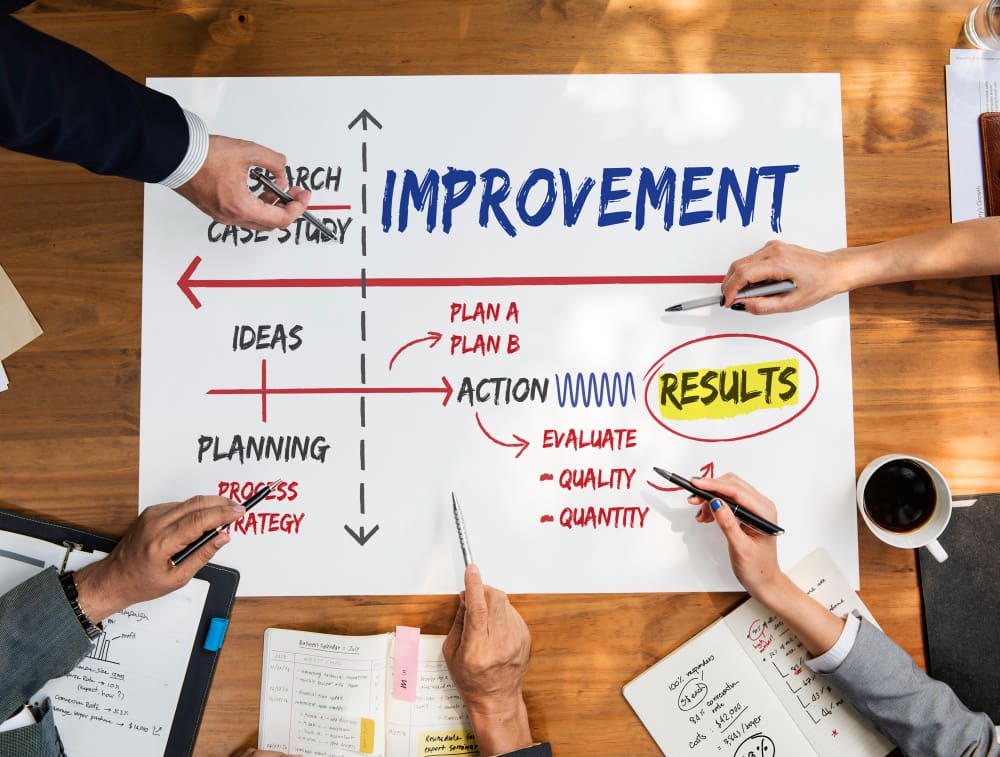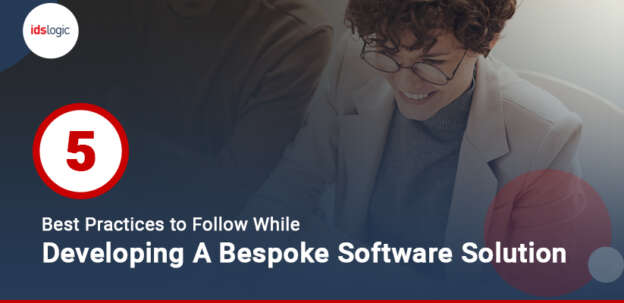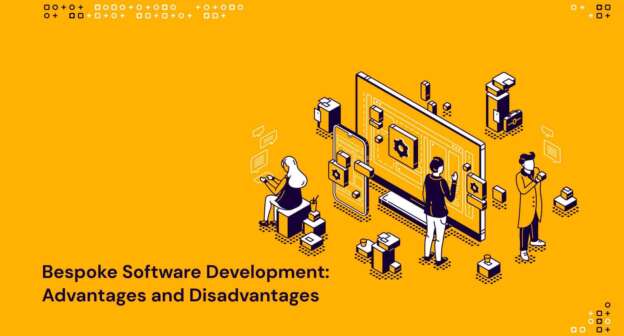The details of Software Development Life Cycle is important to know about when you are considering a new approach to try. The blog here explains the same.
Software Development Life Cycle: Which Methodology will Suit You?
Reading the title would have surely compelled you to thing that obvious question. And in case you are somehow related to software development/ website development services, you must have come across the question in past also. So, what do you think about the approaches in software development? What understanding do you have of the topic as a whole? And which Software Development Life Cycle (SDLC) would you prefer? All this and much more will be explained in this article here, starting with the basic definition of software development life cycle methodology.
Let’s start with a brief on SDLC!
The Software Development Life Cycle (SDLC) is a creative journey where code evolves from mere lines to a refined, impactful solution. Whether following Agile, Waterfall, or DevOps, the SDLC serves as the backbone of transforming concepts into fully functional, high-performing software. It is more than just coding. It is about driving innovation, solving real-world problems, and crafting software that aligns with user expectations.
Although developing a solid plan, securing a substantial budget, staying updated with the latest industry trends, and choosing the right tech stack are vital, these factors alone won’t guarantee success. An unstructured or chaotic SDLC approach can prevent your product from connecting with its target audience. This can also prevent you from standing out in the market, or worse, leading to its failure.
Each SDLC phase, which includes the time from planning and analysis to design, development, and maintenance, works in unison to ensure a smooth, optimized workflow. This structure minimizes risks like inconsistency, market misalignment, and scope creep. This in turn helps to deliver a product that maximizes value. A well-organized SDLC is far from a procedural formality. It is the key to creating a software solution that excels, resonates with users, and outshines competitors.
The significance of SDLC
Software development lifecycle is important considering a number of factors. The significance gets more crucial when it is in regards to website development services. While there a number of benefits that come along with such services, we are detailing here some of the ones that help and ensures services are taken most frequently.
The Software Development Life Cycle (SDLC) is vital for ensuring the successful execution of software projects. With several key benefits driving its importance, it is important to ensure the right development approach for projects depending upon their requirements. One of the primary advantages is risk reduction, as it enables early identification and mitigation of potential issues that could derail a project.
By adhering to the SDLC, quality assurance is maintained throughout each phase, ensuring that high standards are met consistently from start to finish. Additionally, the SDLC enhances predictability, offering a clear timeline and well-defined milestones, making it easier to anticipate project outcomes.
Cost management is another critical aspect, as the structured approach prevents budget overruns through detailed planning and ongoing tracking of expenses. The SDLC also ensures transparency, providing stakeholders with clear visibility into the project’s progress through regular updates and checkpoints.
Lastly, it drives efficiency improvement by streamlining the development process, saving both time and resources, and ultimately delivering a better-quality product within scope. Together, these elements make the SDLC an essential framework for managing the complexities of software development.
Types of SDLC Methodology
Agile
The Agile model is built around multiple release cycles, each introducing small, incremental changes that build upon the previous release. After every iteration, the product is rigorously tested, ensuring that issues are identified and resolved before they escalate. This iterative process allows teams to tackle potential problems early. Such an approach reduces the risk of major setbacks later in development.
A standout feature of the Agile approach is its emphasis on collaboration and continuous feedback from business stakeholders throughout the entire development process. This ongoing communication ensures the project stays aligned with business goals and adapts to changing requirements effectively.
Many Agile teams use a framework called Scrum to manage more complex projects. Scrum teams work in short, focused periods called sprints. The sprints period typically lasts for two to four weeks. During these sprints, daily Scrum meetings allow the team to track progress and address any roadblocks.
V Shaped
The V-shaped model, also known as the Verification and Validation (V&V) model, is a linear software development framework derived from the Waterfall model but is notably more rigid. Its structure resembles a “V,” symbolizing the strong relationship between validation and verification, the two key concepts that define its approach.
During the verification stages, requirements and designs are meticulously crafted, ensuring that the system is being built correctly according to specifications. Each of these stages has a corresponding validation stage, where rigorous testing and user acceptance checks are performed to confirm that the system meets the intended purpose.
The critical link between the verification and validation phases is the implementation or coding stage, which serves as the bridge connecting both sides of the model.
Lean
The Lean SDLC model is designed to focus on delivering only what is essential at each stage of development. Central to this approach is the goal of identifying and eliminating waste throughout the entire software development process. Inspired by the principles of lean manufacturing, the Lean model is built on seven core tenets, which includes;
Eliminate waste: Focus on removing any activity that does not add value to the product.
Amplify learning: Encourage continuous improvement and adaptability by incorporating feedback loops throughout development.
Decide as late as possible: Delay decisions until the last responsible moment to maintain flexibility and accommodate changes.
Deliver as fast as possible: Prioritize speed in delivery to get a working product into the hands of users quickly.
Empower the team: Give the development team autonomy, enabling them to make decisions and drive the project forward.
Build in integrity: Ensure quality is embedded into the process from the beginning, rather than being an afterthought.
See the whole: Maintain a holistic view of the project, ensuring that all efforts are aligned with the larger objectives.
By adhering to these principles, the Lean SDLC model fosters a streamlined, waste-free development process that maximizes efficiency and delivers high-quality software with minimal delays. The approach is very similar to Agile while having some significant points of differences.
Spiral
The Spiral model is one of the most flexible methodologies in the Software Development Life Cycle (SDLC). The method is characterized by its iterative and repetitive nature, similar to the Iterative model. It consists of four key phases, which includes planning, risk analysis, engineering, and evaluation. This unique structure allows for multiple rounds of refinement and revision, ensuring that the product evolves with each iteration until it reaches completion.
The Spiral model is particularly well-suited for large-scale projects where customization and adaptability are critical. One of its standout advantages is the ability to incorporate user feedback. Additionally, the Spiral model excels at risk management, as each iteration starts with a thorough risk analysis, identifying potential challenges and defining strategies to mitigate or avoid them.
Iteractive
The Iterative methodology revolves around the concept of repetition and incremental progress. Unlike other SDLC approaches that require fully defined requirements at the outset, the Iterative method allows project teams to begin with a basic set of requirements. The project then progresses through cycles of development, testing, and evaluation, during which additional requirements are identified and incorporated. Each iteration results in a new, improved version of the software, gradually bringing it closer to the final product.
This cyclical process continues until the final version is complete. One of the key advantages of the Iterative methodology is that it produces a working version of the product early in the project. This allows for continuous feedback and early implementation of changes.
Waterfall
The Waterfall method is a straightforward concept. It states complete one phase fully before moving on to the next. Each phase, such as requirements gathering, design, implementation, testing, and deployment, thus need attention one after another. Once a stage is nearing completion, the team progresses to the next, there is no turning back. And therefore, revisions or changes to earlier stages are not possible. Each subsequent phase depends on the outputs and information from the previous one, with clearly defined project plans guiding the process.
While the Waterfall model has admiration for its simplicity and structured approach, it is rigid at the same time. Since changes or corrections are not easy to introduce until the maintenance stage, any issues or overlooked details discovered in later phases may cause significant delays or costly reworks. This inflexibility makes the Waterfall method less suited for projects where adaptability is crucial or for long-term, evolving initiatives.
DevOps
The DevOps SDLC model fosters close collaboration between development and operations teams. This approach advocates to often merging them (development and operations teams) into a single, cohesive unit. This integrated approach accelerates innovation, enabling the delivery of higher-quality and more reliable software products and features at a faster pace. Unlike traditional SDLC models, DevOps emphasizes seamless communication and cooperation throughout every phase of the software development process, from planning to deployment and maintenance.
DevOps is a relatively new methodology, emerging from two key trends: the adoption of Agile and Lean practices in operations, and the recognition of the value added by uniting development and operations teams for continuous collaboration. This model has features such as small, frequent updates, which reduce risk and enable quicker responses to changes or issues. DevOps also thrives on continuous feedback and process improvement. Such an approach ensures that teams can learn and adapt rapidly.
Which Methodology to Go For?
The aim with describing all the major software development lifecycle methodology is to provide you all with a clear understanding of all the processes. This will help you to get a better understanding of all the processes while helping you to choose the right one as per your project requirement. In case, you are having similar requirements for software development projects, IDS Logic can help you with services that are reliable and will provide the results as intended.













